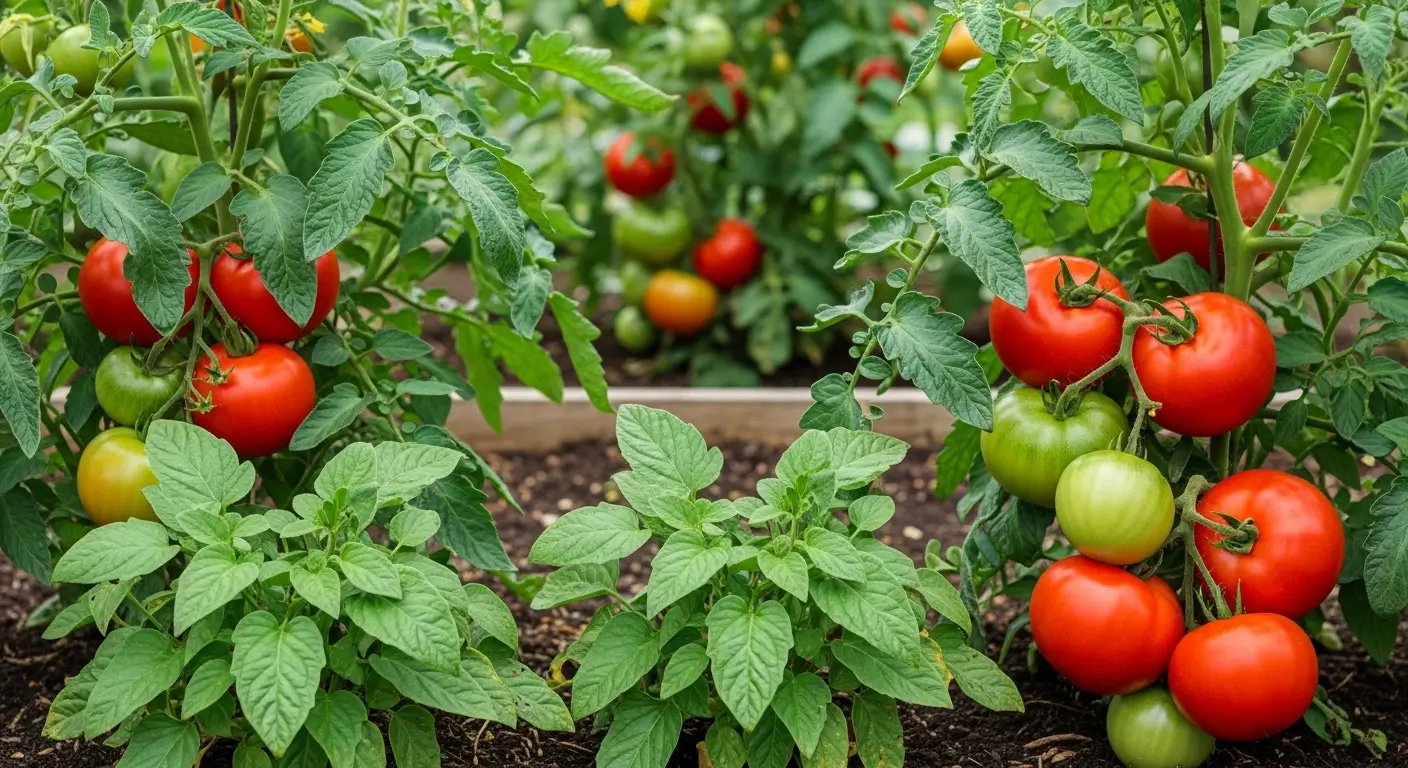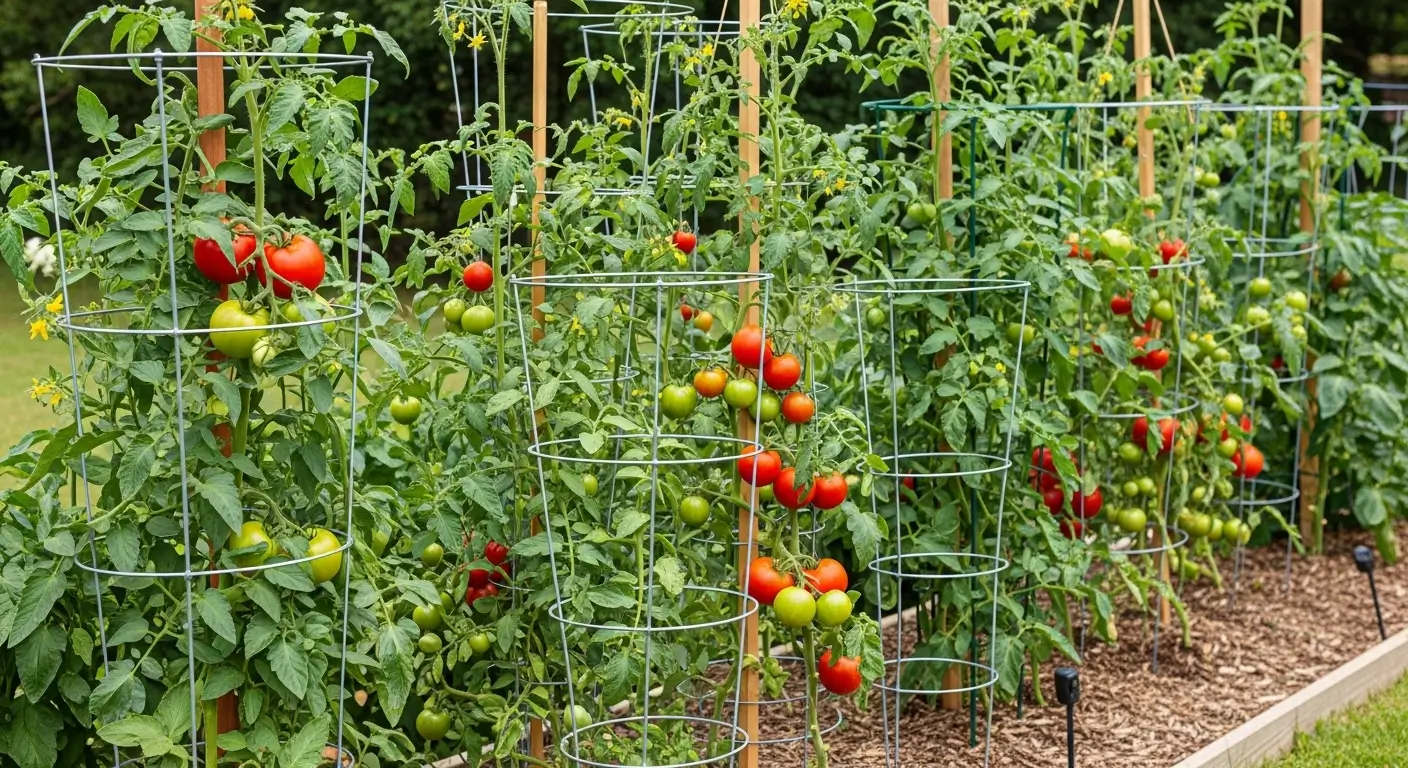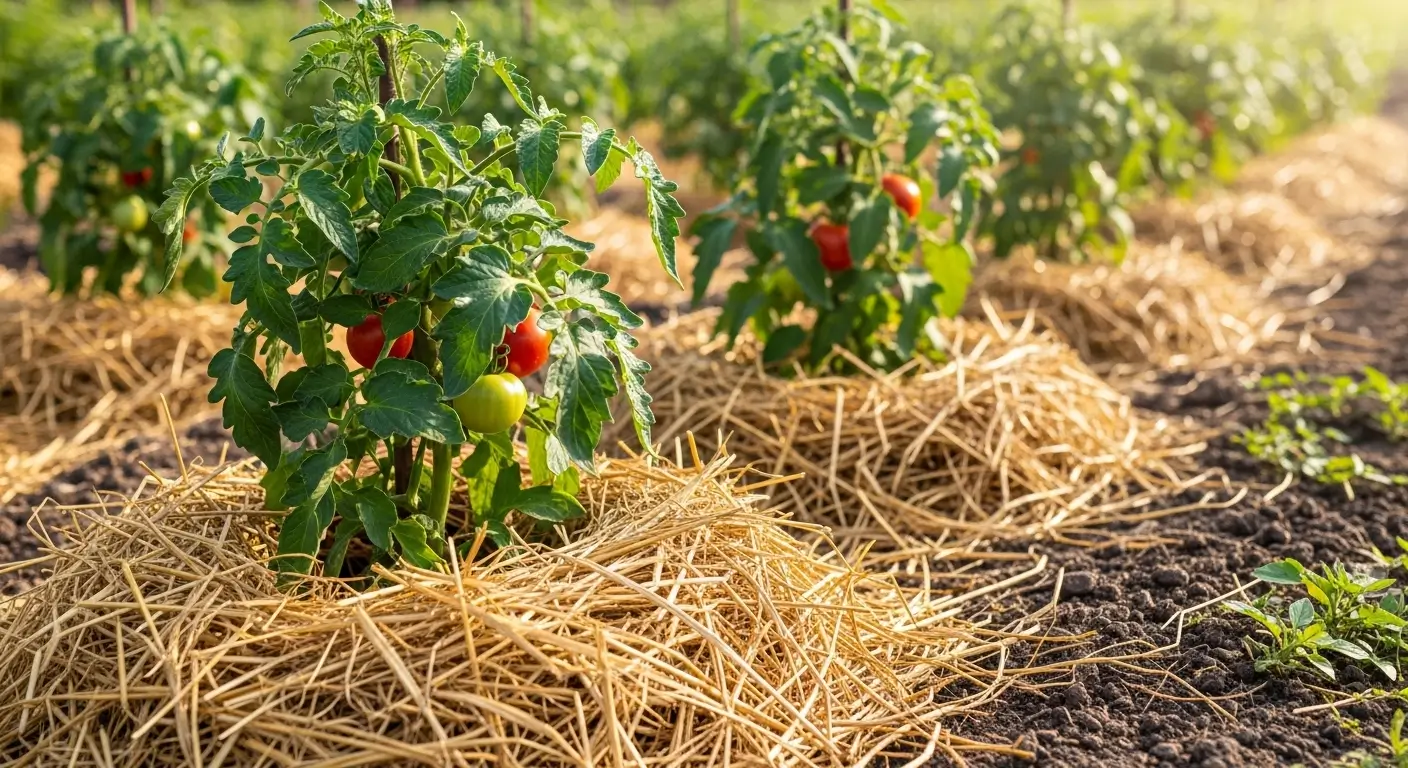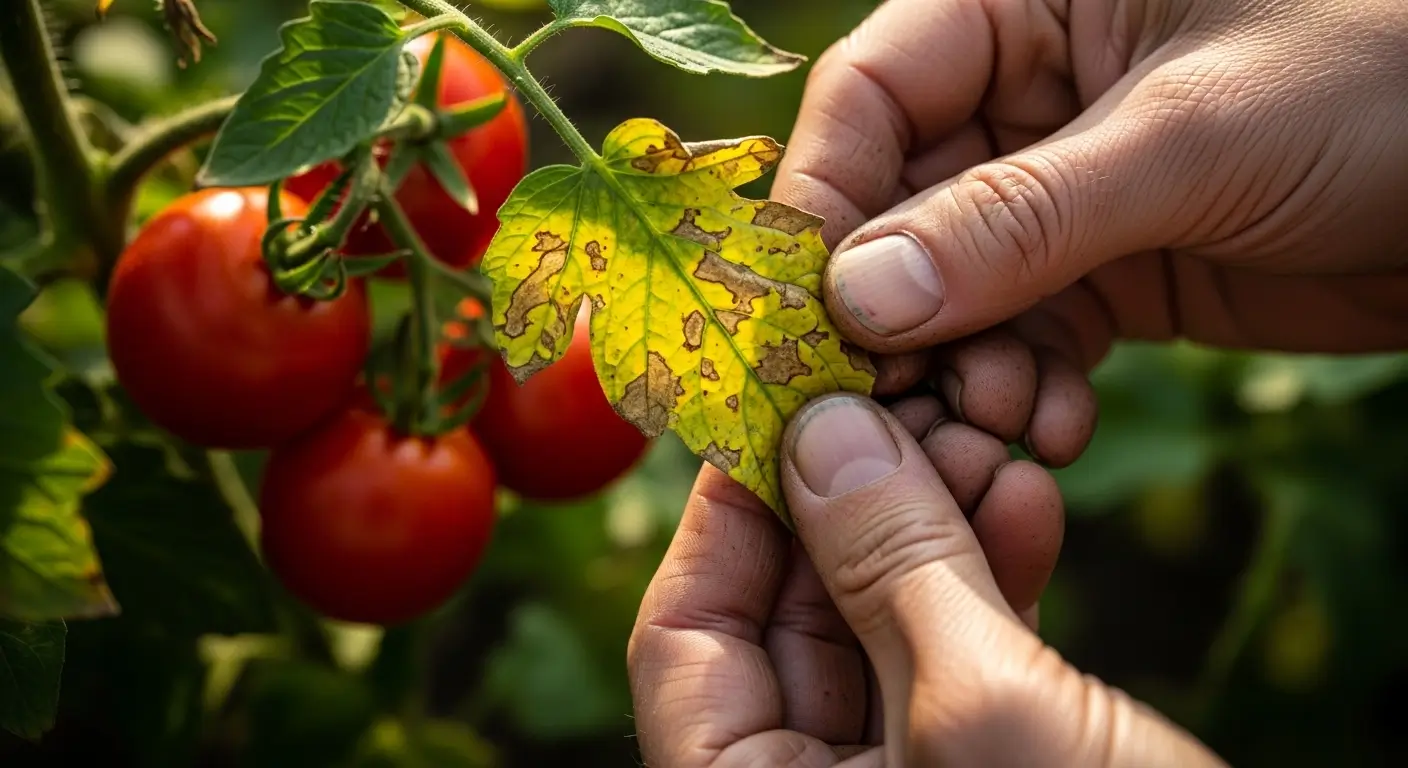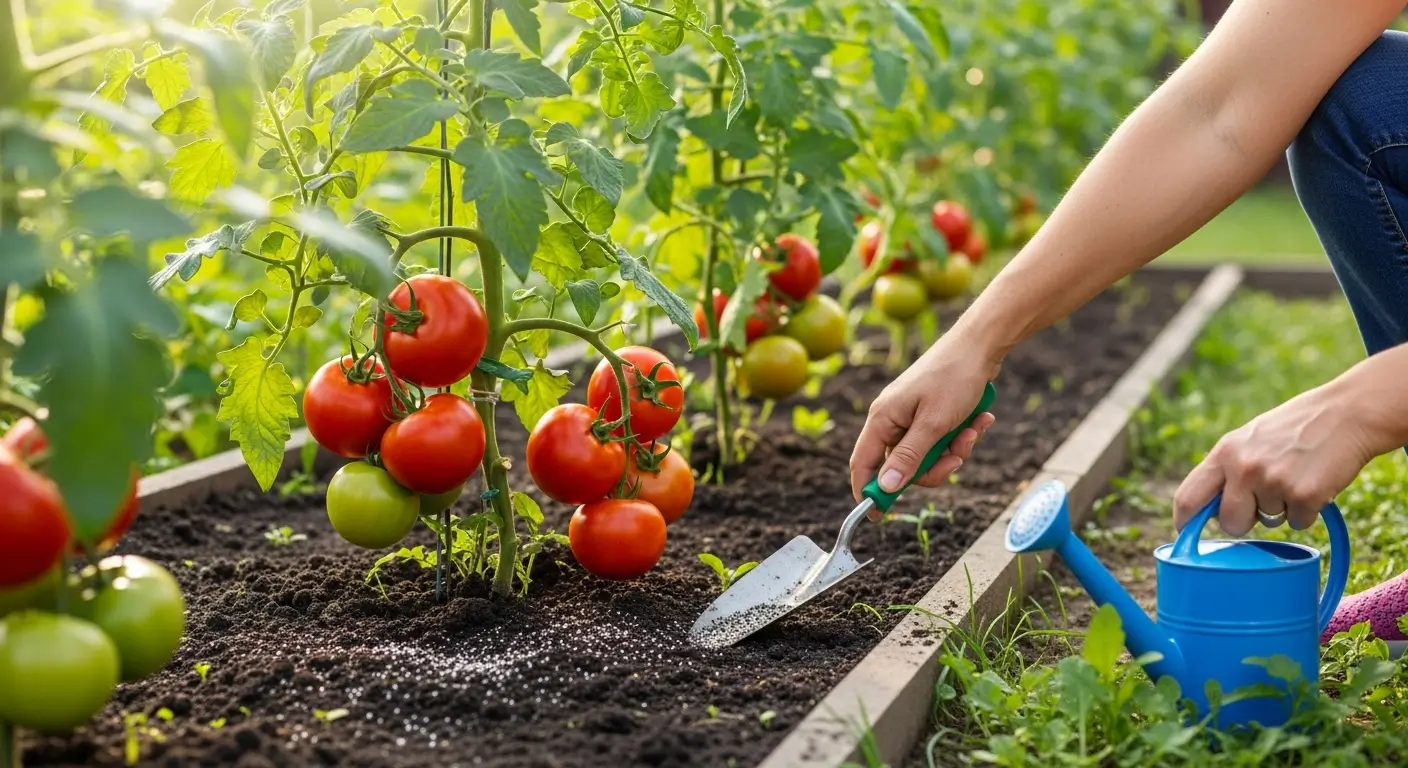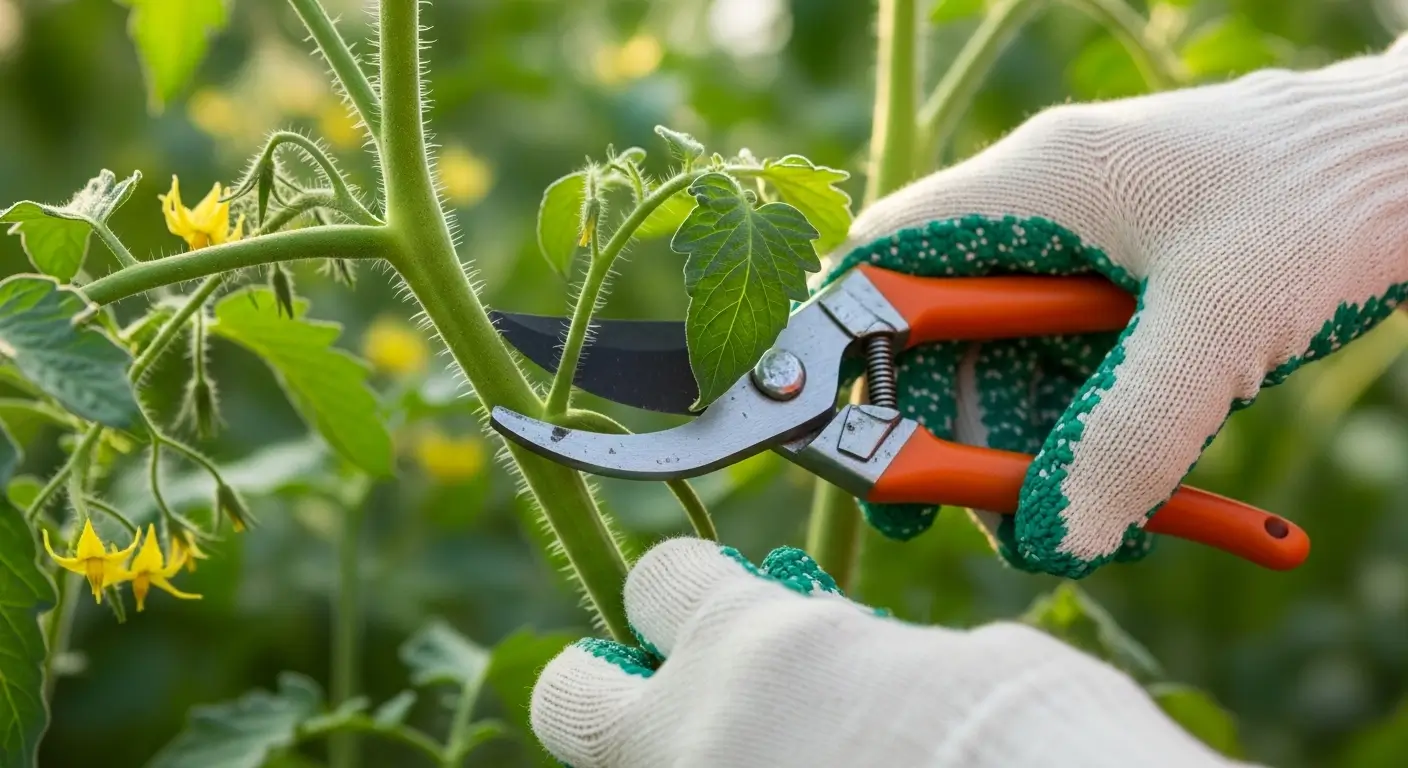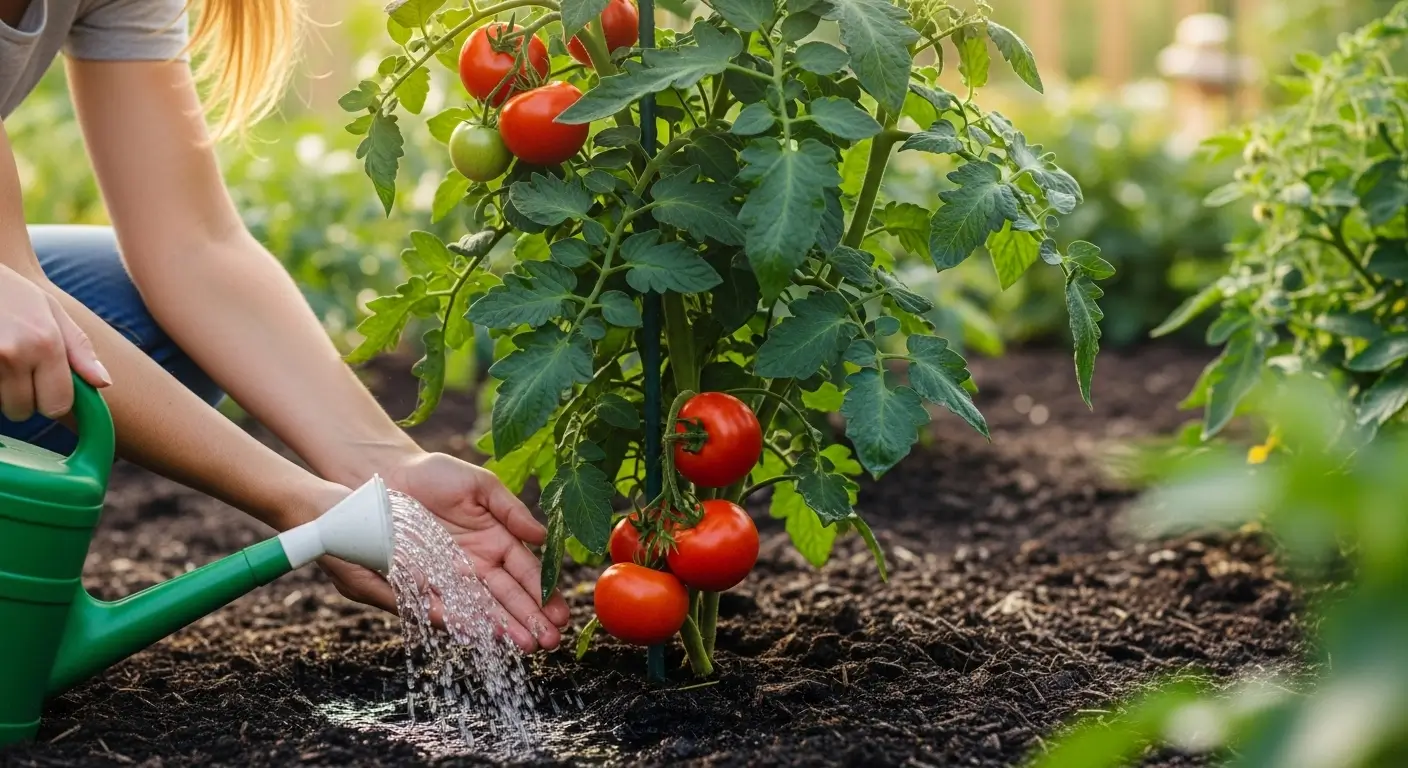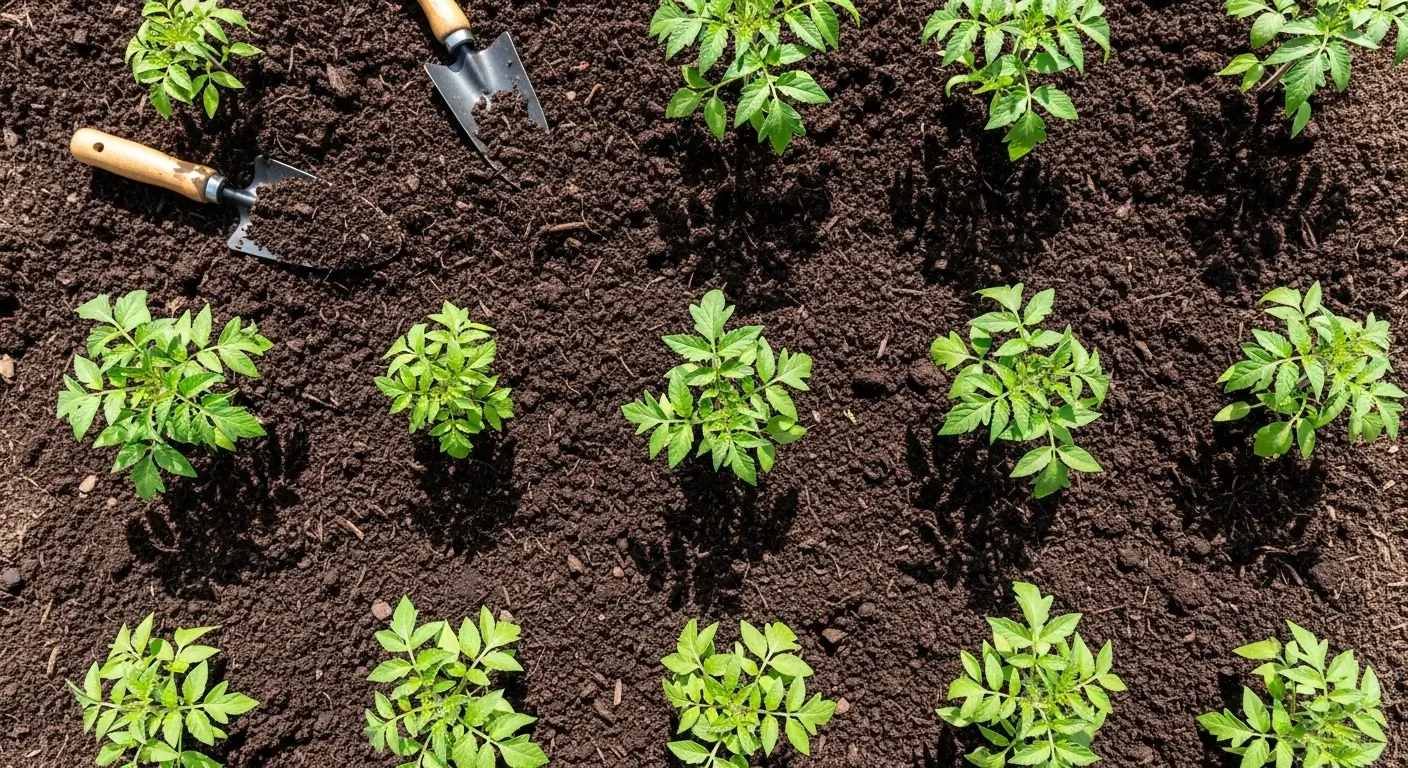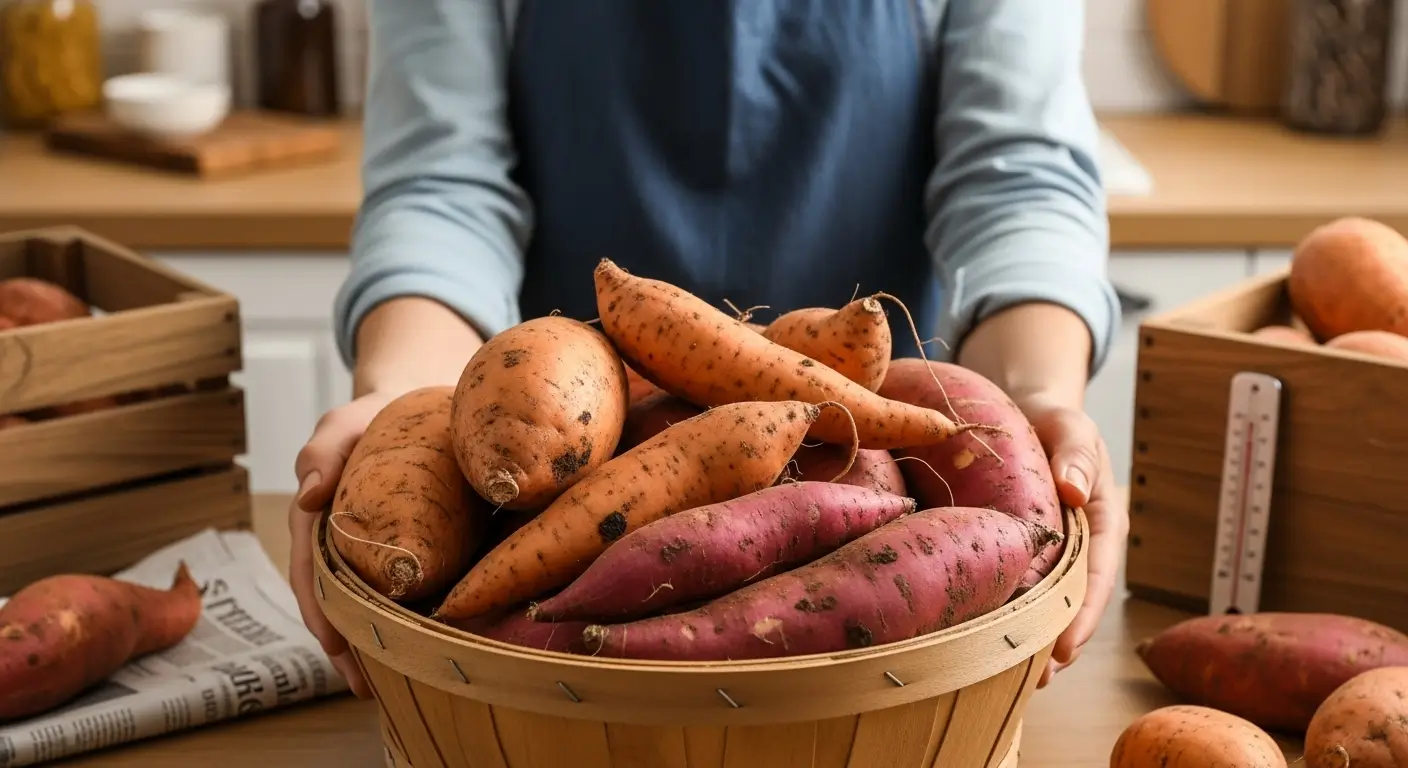Oh my gosh, can we talk about that heartbreaking moment when you’re strolling through someone’s garden and their tomato plants look like they’ve been through a war zone? Yellow leaves, brown spots, wilted stems—it’s like a plant graveyard. Meanwhile, your neighbor down the street has these gorgeous, thriving tomato plants that look like they belong in a magazine. What’s their secret? They probably chose disease-resistant tomatoes right from the get-go.
Trust me, I learned this the hard way. Third year of gardening, and I thought I had it all figured out. Then, late blight hit my tomato patch like a freight train, and I lost everything. I’m talking about going from dreaming of homemade salsa to staring at dead plants in about two weeks. Not fun. That’s when I realized I needed to get way smarter about which tomatoes I was actually planting.
Table of Contents
Why Disease Resistance Matters More Than Ever
Here’s the deal: tomato diseases are getting nastier every year. I don’t know if it’s climate change, but even gardeners who’ve been doing this forever are scratching their heads at some of the stuff they’re seeing.
When I first started growing tomatoes, I picked varieties based on pretty pictures in catalogs. Oh, this one has purple stripes? Yes, please! This heirloom has been around for 200 years? Sign me up! I’d plant these exotic beauties and then watch them basically commit suicide by mid-July. Super frustrating.
Here’s what nobody tells you when you’re starting out: the most delicious tomato in the world doesn’t matter if the plant croaks before you can eat anything. I know, I know—it sounds obvious now, but when you’re caught up in the excitement of planning your garden, it’s easy to forget about the boring practical stuff.
Disease-resistant tomatoes aren’t just playing it safe—they’re actually pretty brilliant. These plants have been bred (or just naturally developed) to basically give diseases the middle finger. They have built-in defenses against all the nasty stuff like early blight, late blight, and those soil diseases that can wipe out your whole crop.
Understanding Tomato Disease Resistance Codes
Before I start rambling about specific varieties, you need to decode those weird letter combinations on seed packets. I used to ignore them completely, thinking they were marketing nonsense. Boy, was I wrong.
V = Verticillium Wilt resistance
F = Fusarium Wilt resistance (sometimes you’ll see F1, F2, F3 for different types)
N = Nematode resistance
T = Tobacco Mosaic Virus resistance
A = Alternaria Stem Canker resistance
St = Stemphylium Gray Leaf Spot resistance
So if you see a tomato labeled “VFNTASt,” that bad boy resists everything. Now, you don’t need to go crazy and find varieties resistant to everything—focus on what’s actually a problem in your area. I always look for at least VF here in Illinois because those soil diseases are everywhere.
For a comprehensive database of disease resistant varieties with detailed resistance information, Cornell University’s Disease-Resistant Tomato Varieties page is an incredible resource. They’ve compiled resistance data from multiple seed companies and categorized varieties by type, making it super easy to find exactly what you need for your garden.
The Best Tomatoes for Blight Resistance
Let me tell you about my ride-or-die varieties that have never let me down. These aren’t just good on paper—they’ve survived my garden’s chaos for years.
Cherry Tomatoes That Never Quit
Mountain Fresh Plus is like the superhero of cherry tomatoes. I’ve been growing this little champion for five years now, and it just keeps going when everything else is throwing in the towel. The tomatoes are sweet, they don’t crack when it rains too much, and I’m still picking them in October when my neighbors are already cleaning up their gardens.
Jasper is another winner. This one’s actually determinate (which means it ripens all at once instead of dragging things out all season), so it basically races to produce fruit before diseases even have a chance to think about moving in. Smart, right? Plus, it’s perfect if you’re growing in containers—doesn’t take over your whole patio.
Slicing Tomatoes Built to Last
Iron Lady totally lives up to its name. This variety is tough as nails. I’ve watched it shrug off early blight that completely destroyed other plants right next to it. And the tomatoes? Perfect for sandwiches—nice and meaty with that classic tomato flavor that tastes like something.
The full-size Mountain Fresh Plus (yeah, they make both sizes) has been my backup plan for years. When everything else starts looking sad and droopy, this one’s still cranking out tomatoes like nothing’s wrong. They’re not huge, but they’re perfect for everyday cooking and last forever on the counter.
Defiant PhR was literally bred to fight late blight, and wow, does it deliver. Remember that horrible blight year I mentioned? This was one of the only varieties that survived in my neighbor’s garden while everything else turned into plant soup. The tomatoes are big and actually taste great—bonus!
Paste Tomatoes for Preservation
If you’re into making sauce (and honestly, why wouldn’t you be?), Plum Regal is your new best friend. It’s determinate, which means all the tomatoes ripen simultaneously—perfect for marathon sauce-making sessions. I usually get enough from four plants to keep me in pasta sauce all winter. Plus, it laughs at both early and late blight.
Tomato Disease Prevention: Beyond Variety Selection
Picking disease-resistant varieties is essential, but it’s not the only trick up your sleeve. I’ve learned that preventing problems is way easier than trying to fix them once they start.
Soil Health is Everything
Healthy soil = healthy plants. It really is that simple. For my first few years, I was obsessing over fertilizers and watering schedules while ignoring what was happening underground. Rookie mistake.
Now I’m a total compost nerd. Every spring, I dump 2-3 inches of homemade compost on my raised beds. Not only does it feed the plants, but it’s like adding a whole army of good bacteria and fungi that help fight off the bad guys. Don’t stress if you can’t make your own compost—even the stuff from the garden center makes a huge difference.
Spacing and Air Circulation
I used to cram my tomato plants together like sardines, thinking I’d get more tomatoes in less space. Spoiler alert: that’s not how it works. Crowded plants create this humid, stagnant air that diseases absolutely love. It’s like rolling out the red carpet for fungal problems.
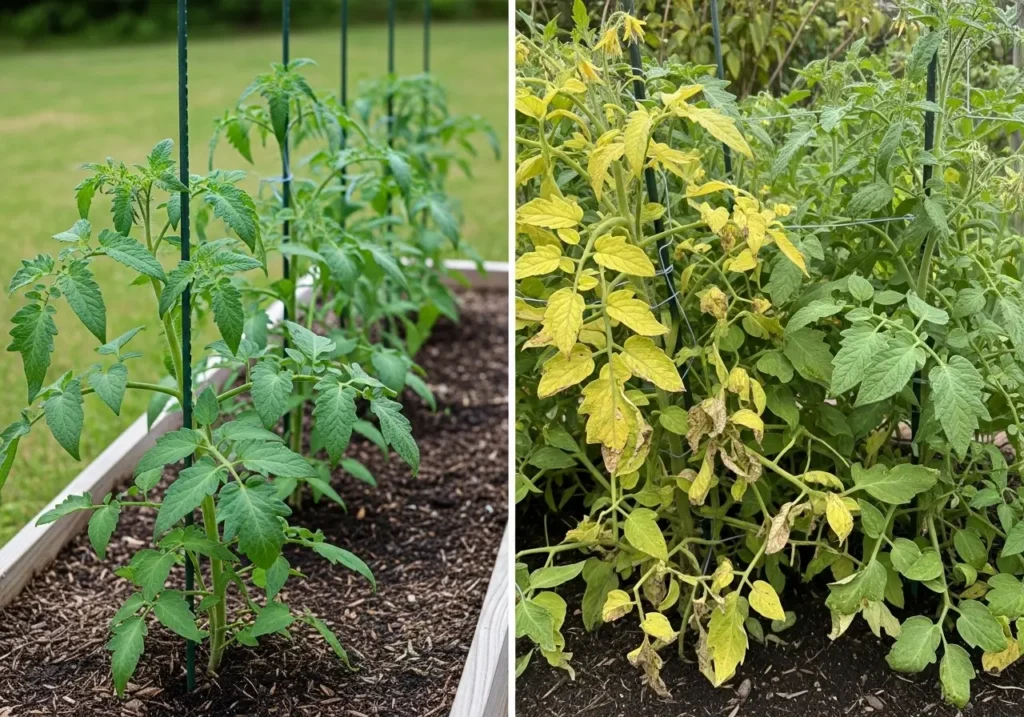
Now I give my plants room to breathe—18-24 inches for the smaller determinate varieties, and 24-36 inches for the big indeterminate ones. Yeah, it looks like a lot of empty space at first, but trust me, good air circulation is like having a natural disease prevention system.
Watering Wisdom
Here’s something that took me way too long to figure out: it’s not just about how much water you give your plants, it’s about how you provide it to them. I used to blast everything with the sprinkler, giving every disease spore a free ride onto my plant leaves. Not smart.
Now I use soaker hoses or just water right at the base of the plants. If I have to hand water, I aim low and try not to splash water all over the leaves, especially in the evening. Wet leaves overnight are like sending an engraved invitation to every fungus in the neighborhood.
Heirloom vs Hybrid Tomatoes: The Disease Resistance Debate
Okay, this is where things get interesting and people start having opinions. Let me give you my honest take after growing both types for years.
The Heirloom Appeal
I absolutely love heirloom tomatoes. The flavors are incredible—we’re discussing varieties passed down through families for generations. Cherokee Purple, Brandywine, Green Zebra—these are tomatoes with personality and stories behind them.
But here’s the reality check: most heirlooms were developed way before modern diseases became such a nightmare. They’re often sitting ducks when it comes to disease resistance. I’ve had entire rows of gorgeous Brandywines get completely wiped out by late blight. At the same time, hybrid varieties right next to them kept on trucking.
The Hybrid Advantage
Hybrid tomatoes get a bad rap sometimes, but they’re amazing. They’re created by crossing two different parent varieties to get the best of both worlds. When it comes to disease resistance, hybrids have a massive advantage because breeders can specifically choose parents that resist different diseases.
This doesn’t mean hybrids are “fake” or taste bad—that’s just garden snobbery. I grow tons of hybrids, and many of them taste fantastic. Celebrity, for example, is a hybrid that’s both delicious and practically bulletproof when it comes to diseases.
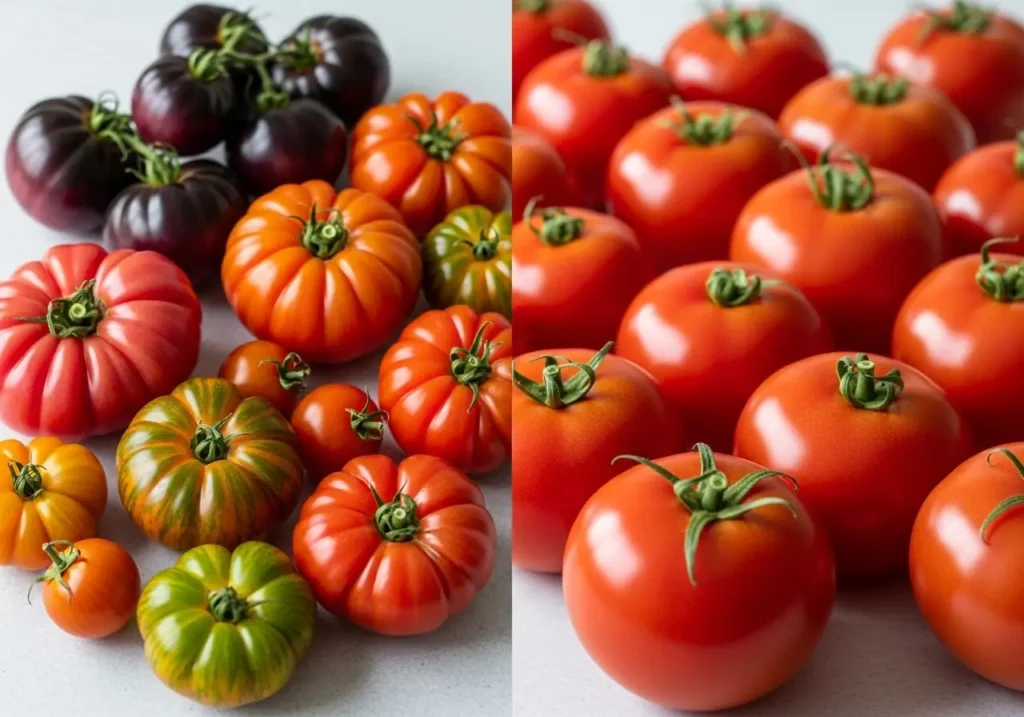
My Balanced Approach
In my garden, I hedge my bets. About 70% of my tomatoes are disease-resistant hybrids that I know will produce no matter what Mother Nature throws at me. The other 30% are heirlooms that I grow for their amazing flavors, even though I know I might lose some to diseases.
If you’re starting out, I’d definitely recommend going with disease-resistant hybrids first. Get some success under your belt, build your confidence, and then start experimenting with the more challenging (but totally worth it) heirloom varieties.
Regional Considerations for Disease Resistance
Not all diseases are the same everywhere, and what’s trying to kill tomatoes in Florida is probably totally different from what I’m dealing with here in Illinois. Knowing what you’re up against in your area is super important.
Common Regional Threats
Down South, they’re dealing with bacterial wilt and southern blight because of all that heat and humidity. Up North, we get more late blight and early blight, especially when we have those cool, wet springs that seem to drag on forever.
If you’re in the Southwest, fusarium wilt and soil nematodes are your biggest headaches. Pacific Northwest folks are constantly battling late blight because of all that lovely (but disease-friendly) moisture.
Your local extension office is pure gold for figuring out what diseases are actually a problem in your area. I check in with the University of Illinois Extension every year to see what they see in local gardens. It’s like having your own personal disease forecaster.
Adapting to Your Climate
I’ve learned to pay attention to weather forecasts when I’m planning my tomato varieties. I focus heavily on the late blight-resistant varieties if they predict an exceptionally wet spring and summer. During hot, dry years, I might take more chances with some of my favorite disease-prone heirlooms.
This kind of planning comes with experience, but even beginners can get ahead by choosing varieties bred for their specific region.
Key Takeaways for Growing Disease-Resistant Tomatoes
After 15+ years of growing tomatoes and making basically every mistake possible, here’s what I wish I could tell my younger gardening self:
Start with resistant varieties: Those letter codes on seed packets aren’t just decoration. Look for at least VF resistance—it’s like getting plant insurance.
Don’t put all your tomatoes in one basket: Grow several different varieties with different resistance profiles. If one gets sick, hopefully the others will keep producing.
Prevention is everything: Good soil, proper spacing, and smart watering make your disease-resistant varieties even more resistant.
Know your enemy: Determine what diseases are a problem in your area and plan accordingly.
Balance risk and reward: It’s totally fine to grow some riskier varieties for amazing flavors—don’t make them your entire crop.
Keep learning: Disease pressure changes, new varieties emerge, and even experienced gardeners are constantly figuring out new tricks.
Check out our complete guide for everything you need to know about growing tomatoes—from soil prep to harvest. And if you’re working with limited space, our tutorials on growing tomatoes upside down and raised bed tomato growing have some pretty cool space-saving tricks.
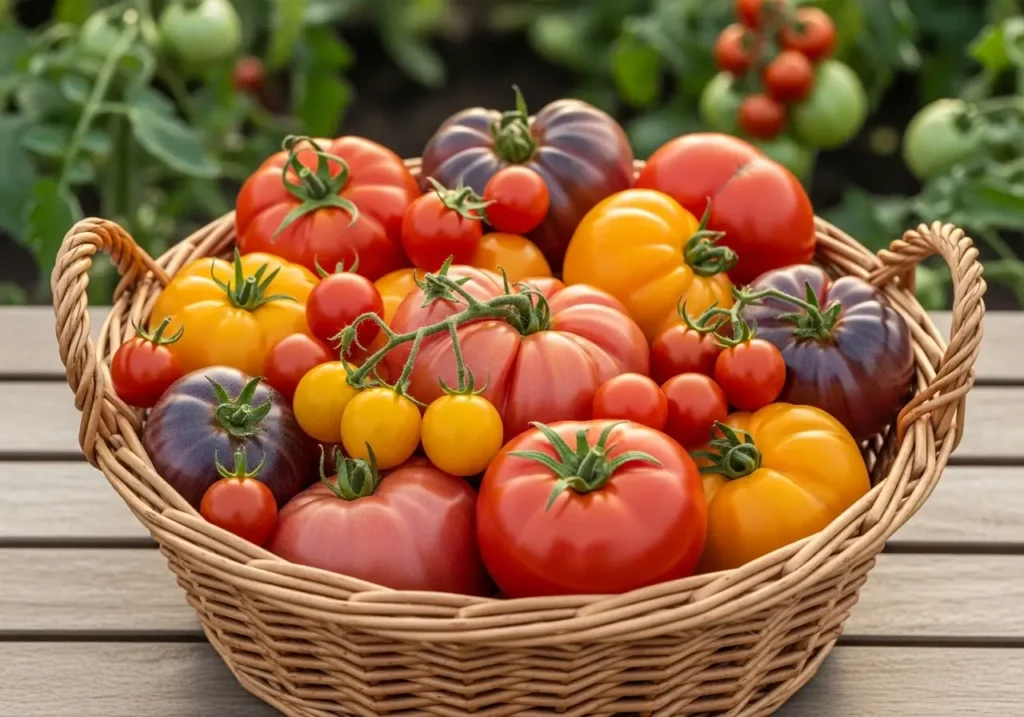
Growing Forward with Confidence
Choosing disease-resistant tomatoes isn’t about taking the easy way out—it’s about being smart and learning from other people’s mistakes (and science, obviously). Every growing season brings something new to deal with, but starting with varieties that have built-in advantages makes sense.
I still get excited remembering that first season after I switched to mainly disease-resistant varieties. Instead of watching my plants slowly die while I felt helpless, I was harvesting perfect tomato baskets. Game changer.
What’s your experience with tomato diseases? Have you found any varieties that refuse to quit in your garden? I’d love to hear about your wins (and epic fails) in the comments. We’re all figuring this gardening thing out together. Some of the best tips I’ve gotten have come from fellow gardeners sharing their stories.
Happy growing, and here’s to tomato plants that actually make it to harvest time!
